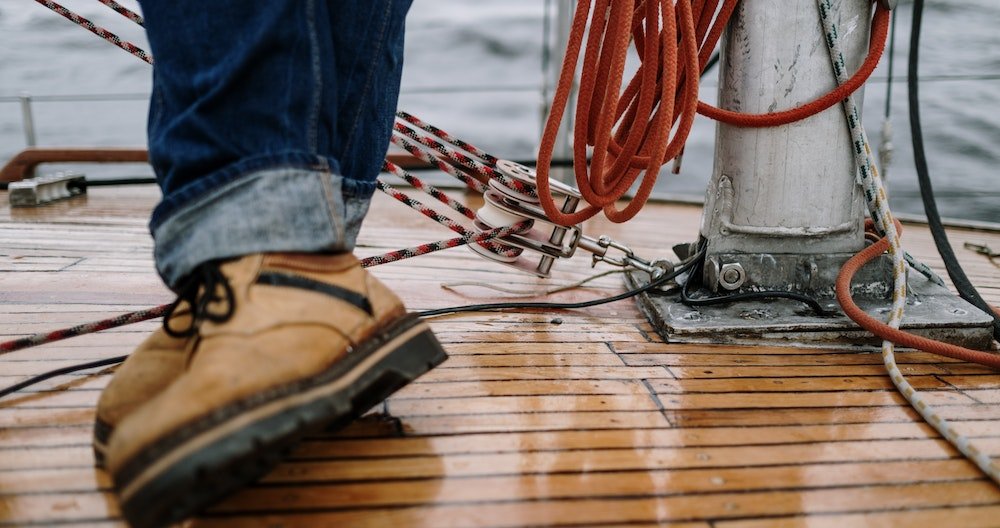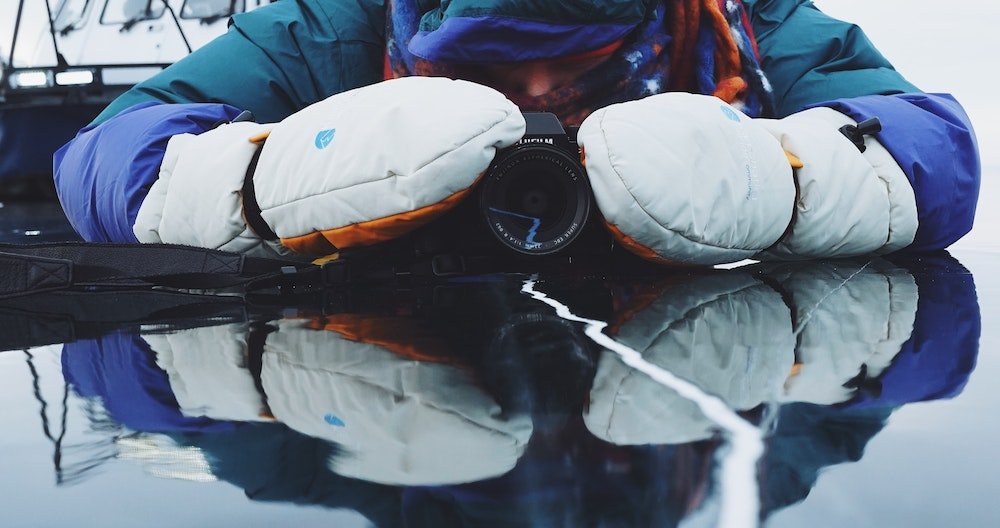There are a few things to consider when choosing what to wear sailing in cold weather. First, you’ll want to layer your clothing to trap heat and protect yourself from the wind and water. Second, you’ll need to choose materials that will keep you warm even when wet. And finally, you’ll need to ensure your clothing is comfortable and won’t restrict your movement.
Here are a few suggestions for what to wear sailing in cold weather:
What to Wear Sailing in Cold Weather (By Layers)
Base Layer
The base layer is the first layer of clothing you’ll put on, and it’s important to choose the right one. You want something that will wick away sweat and keep you warm. However, one fabric that is often used for base layers is merino wool.
Merino wool is a natural fiber that is derived from sheep. It is an excellent base layer because it is extremely effective at wicking moisture away from the body.
Merino wool is also very warm, making it ideal for sailing in cold weather.
Mid-Layer
Once you’ve chosen your base layer, the next step is to add a mid-layer. This is usually a sweater or fleece and wool. Again, you need something that will keep you warm and dry.
One fabric that is often used for mid-layers is wool. Wool is a natural fiber that is very effective at keeping you warm. It is also very breathable, so you won’t get too sweaty while wearing it.
Outer layer
The outer layer for sailing in the winter season is a dry suit. A dry suit is a sailor’s garment that keeps them dry in the water. It is made of a waterproof and breathable material that helps to keep the sailor warm in the water.
Down fabric is an excellent choice for winter sailing, as it is extremely warm and lightweight. Down is also very packable, making it a good choice for sailors who are looking to minimize weight and bulk.
What to Wear Sailing in Cold Weather (for Head, Hands, and Feet)
Headwear
For your head, you’ll want a hat that covers your ears. A wool or synthetic fabric is best, as it will insulate your head and keep you warm even when it’s wet. You might also want a scarf or neck gaiter to keep your neck warm.

Footwear
For your feet, you’ll want socks that will keep your feet warm and dry. Again, wool or synthetic fabric socks are a good choice. You might also want to consider wearing two pairs of socks or even tights under your pants to keep your legs warm.

Gloves
For your hands, you’ll want gloves that will keep your hands warm and dry. Wool or synthetic fabric gloves are a good choice. You might also want to consider fingerless gloves so you can still tie knots and perform other tasks.

Tips on Sailing in Winter Season
Because your body expends energy to remain warm when sailing in the winter, you must be well-protected from the elements, when traveling in cold weather, having the correct clothing and equipment can assure both safety and comfort.
During your winter cruise to the high seas, you’ll need anything from gloves and socks to a heater and a sailing jacket, among other things. Sailing is often more difficult in the winter, but nothing can stop you if you take some basic measures, are well-prepared, and are organized.
1. Layer Your Clothes
Inner layers of wool, silk, and polypropylene retain body heat better than cotton, which absorbs and holds water in its fibers when wet. A wind- and water-resistant outer shell, as well as a pair of sailing boots, will go a long way toward comfort.
No matter what your ability at sea is, boating in the winter may be dangerous. Weather is more susceptible to short-term fluctuations; thus, if a guy fell overboard, there would be little chance of survival. To begin, you must always make sure you have dressed appropriately, as described above, and you should always wear a life jacket.
2. Prepare for Weather Change
Checking the weather and tides before leaving on a trip is essential. This may be done using thermometers and barometers and monitoring the weather station in your area. A barometer may assist you in forecasting short-term changes in weather.
However, always take one person with you when at sea. Always exercise common sense; if a storm is building or the weather is hazy, it’s preferable to remain at home and postpone your journey.
3. To Stay Hydrated, Drink Warm Liquids
Warm drinks in plenty are ideal. Even if you don’t like coffee, there are plenty of other easy-to-make choices on the sea. Hot-Tang is one of my favorite drinks. It’s not only tasty, but it’s also high in vitamin C. Get a thermos and fill it with your favorite hot beverage.
If you’re staying on the boat overnight, snuggle up in your sleeping bag or beneath the blankets with a Nalgene full of hot water (just make sure it’s closed firmly!).
4. Bring a Lot of Food
Sailing in cold weather, particularly on a journey, might increase your carvings. Keeping high-calorie, high-fat, and high-protein items on board will help you maintain a high level of energy.
Nuts, avocados, potatoes, cheese, cold cuts, canned fish, smoked salmon, nut butter, protein bars, and eggs are just a few examples. Soups and drinks from the store are also excellent.
5. Stay Active
If you remain active in the sailing and/or racing of the boat, whether you are cruising or racing, it will assist keep you warm. When you’re sitting around and not doing anything, you usually become chilly.
Keep your blood moving to keep your body warm. Fortunately, with our sport, you can always push yourself to go faster.
6. Bring a First Aid Kit
When you’re sailing in winter, it’s important to have a well-stocked first-aid kit on board. Here are some items that should be in your kit:
- Bandages: to cover cuts and scrapes
- Antiseptic wipes: to clean wounds
- Antibiotic ointment: to help prevent infection
- Pain relievers: to help with aches and pains
- Allergy medication: in case you have an allergic reaction
- Cold medication: to help with cold symptoms
- Hot packs: to help warm up if you get cold
- Flashlight and batteries: in case of power outages
- Whistle: to signal for help
Make sure to pack your first-aid kit in an easily accessible place on board, so you can find it quickly in an emergency.
7. Bring a Radio
One of the most important things to bring when sailing in winter is a radio. This is vital for both safety and communication purposes. In the event of an emergency, you can use your radio to call for help.
And even if everything is going smoothly, it’s always nice to be able to chat with other boats in the area and exchange information about conditions.
Final Words
In conclusion, there are a few things to keep in mind when sailing in winter. First, be sure to dress warmly and in layers. It is also important to keep an eye on the weather forecast and be prepared for changes in conditions.
Lastly, be aware of ice and snow on the deck and rigging, and take care when moving around the boat. With a little planning and preparation, winter sailing can be a fun and enjoyable experience.

